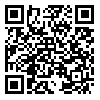2- , mazimian@yahoo.com
Objective: It has been many years that brain lesion analysis of different aphasia Syndromes has led the foundation to investigate the language representation and organization in the brain. The aim of this study was to examine the relationship between brain lesion location and Broca's aphasia and Wernecke's aphasia in Persian speakers with stroke.
Materials & Methods: In a single system design study, from 120 patients with stroke attending Emam Khomeyni and Loghman hospitals, Rofeyde, Karaj neurology, and Tabassom speech clinics and according to the Farsi Aphasia Test (FAT), syntactic comprehension subscale of Bilingual Aphasia Test (BAT), Farsi Aphasia Naming Test, and Apraxia Assessment inventory, only 9 patients with Broca’s aphasia and 2 with Wernicke’s aphasia were qualified to participate in this study. Patients’ brain lesion sites were determined by MRI. Patients with Broca’s aphasia were 5 male and 4 female Wernecke’s aphasia patients were 2 male.
Results: External capsule-insula, rolandic operculum, inferior frontal gyrus, (precentral gyrus and postcentarl gyrus), and the anterior part of temporal gyrus were damaged in Broca’s aphasia patients (64±12.51 years old) and the lesions of external capsule-insula, posterior part of temporal gyrus, anterior part of temporal gyrus, inferior parietal lobule were observed in Wernicke’s aphasia patients (66±8.48 years old).
Conclusion: In no patient with Broca’s aphasia or Wernicke’s aphasia brain lesion confined only to Broca’s area or Wernicke’s area respectively. However, due to the limited number of participants in the present study, the extrapolation of the findings to other subjects with Broca’s or Wernicke’s aphasia would certainly be difficult.
Received: 4/04/2011 | Accepted: 13/10/2015 | Published: 13/10/2015
| Rights and permissions | |
 |
This work is licensed under a Creative Commons Attribution-NonCommercial 4.0 International License. |


